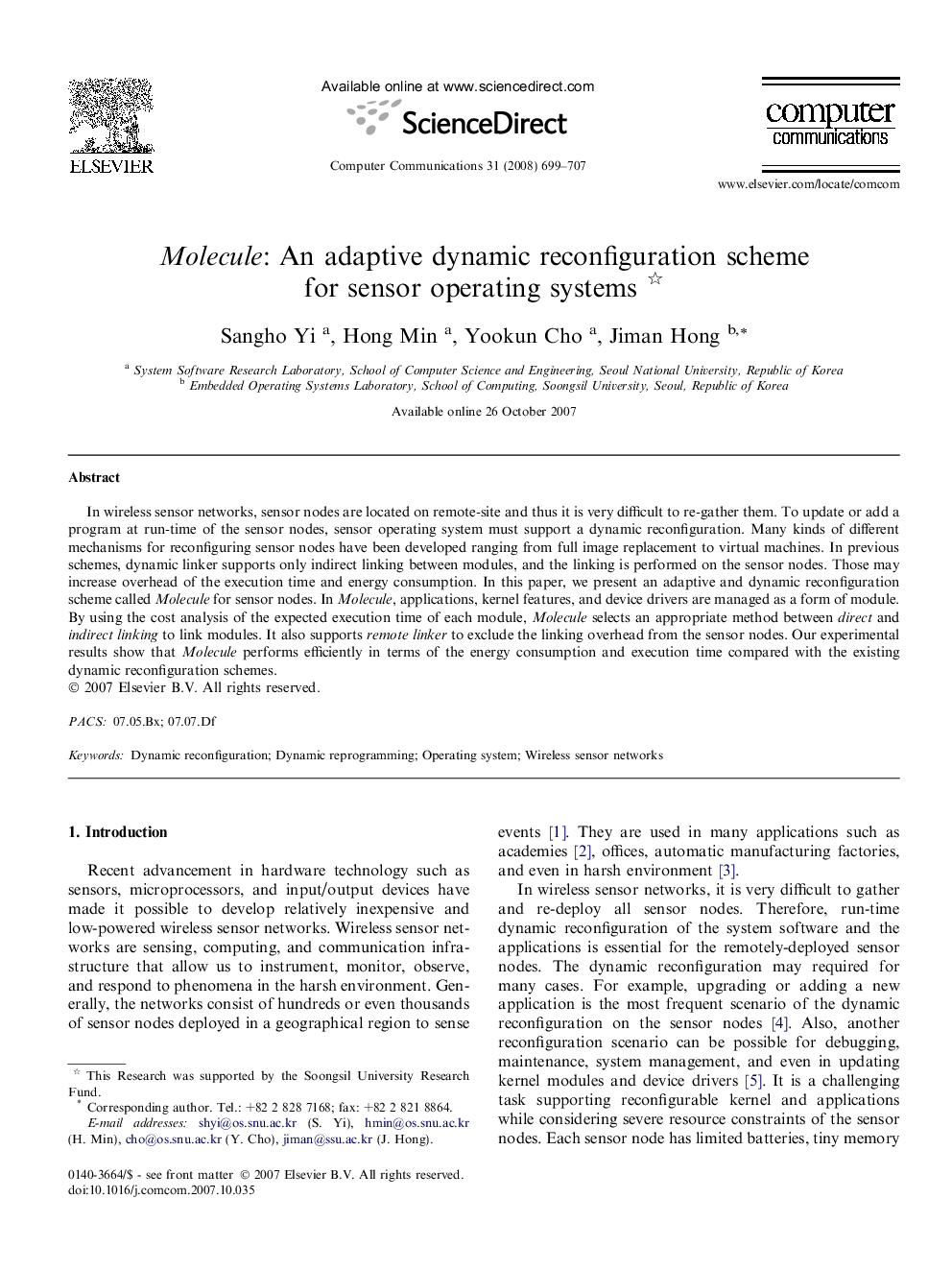| Article ID | Journal | Published Year | Pages | File Type |
|---|---|---|---|---|
| 449523 | Computer Communications | 2008 | 9 Pages |
In wireless sensor networks, sensor nodes are located on remote-site and thus it is very difficult to re-gather them. To update or add a program at run-time of the sensor nodes, sensor operating system must support a dynamic reconfiguration. Many kinds of different mechanisms for reconfiguring sensor nodes have been developed ranging from full image replacement to virtual machines. In previous schemes, dynamic linker supports only indirect linking between modules, and the linking is performed on the sensor nodes. Those may increase overhead of the execution time and energy consumption. In this paper, we present an adaptive and dynamic reconfiguration scheme called Molecule for sensor nodes. In Molecule, applications, kernel features, and device drivers are managed as a form of module. By using the cost analysis of the expected execution time of each module, Molecule selects an appropriate method between direct and indirect linking to link modules. It also supports remote linker to exclude the linking overhead from the sensor nodes. Our experimental results show that Molecule performs efficiently in terms of the energy consumption and execution time compared with the existing dynamic reconfiguration schemes.
